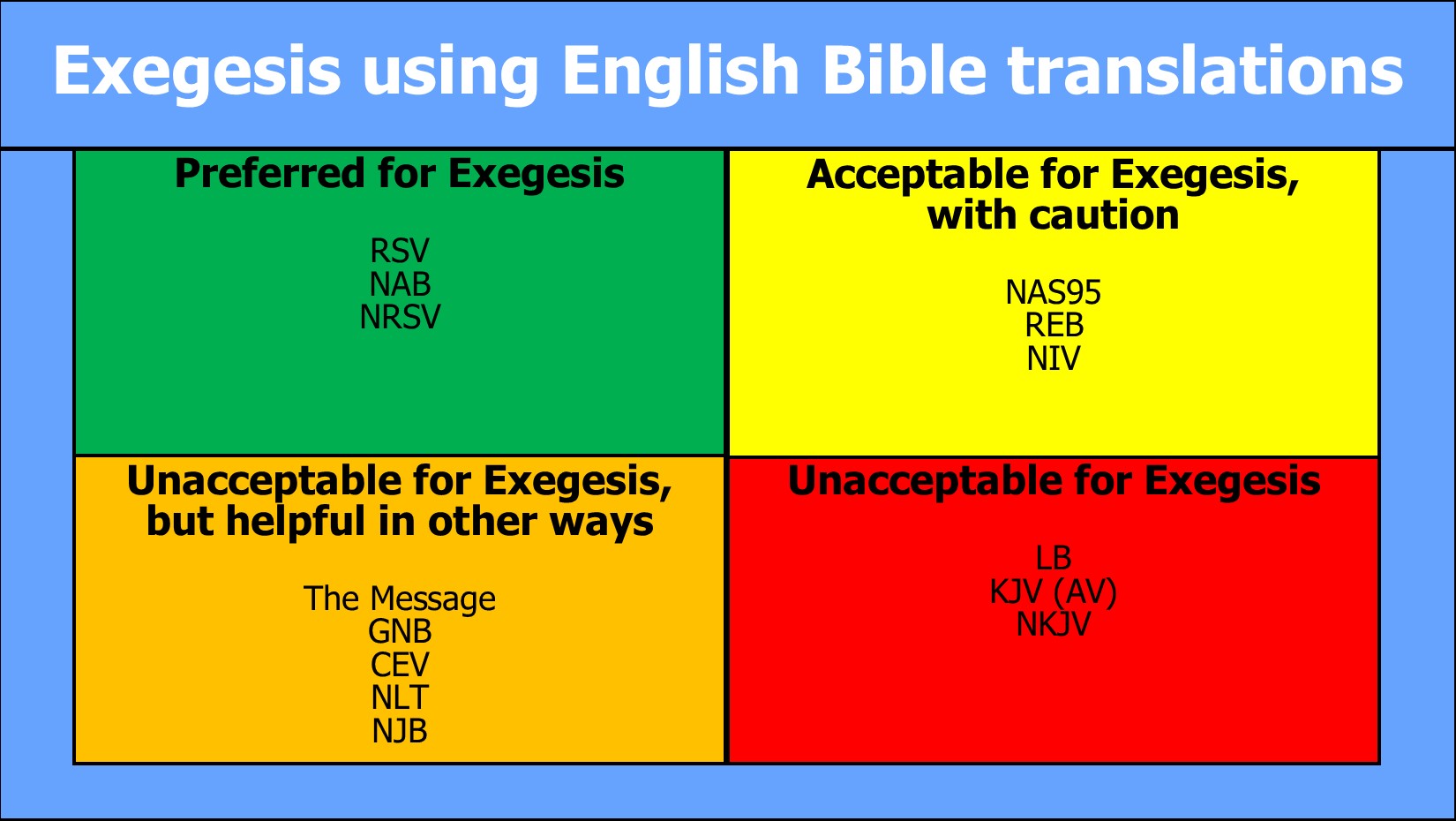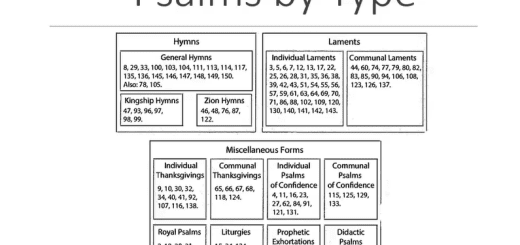Exegesis using English Bible translations
I created this chart and this post from some helpful information I encountered during my seminary studies, drawn from Michael J. Gorman’s book, Elements of Biblical Exegesis.

Exegesis may be defined as “the careful historical, literary, and theological analysis of a text,” or “close reading.” It is an investigation of the many dimensions, or textures, of a particular text. Exegetes must learn to love to ask questions! Exegesis involves balancing attention to the big picture and to the details. The exegetical process is a hermeneutical circle, moving back and forth from the parts to the whole.
It is important to realize that every Bible translation is an interpretation, a kind of streamlined exegesis representing innumerable interpretive judgments and decisions. The task of translation is rendered difficult by several complicating features of language. Formal-equivalence translations emphasize the similarity in the linguistic forms (such as vocabulary and grammatical structures) between the source language and the target language. Functional-equivalence translations stress the similarity in linguistic function (meaning) between the two languages.
No translation is perfect. Each translation represents exegetical judgments; careful users of various translations should view the differences not as equally valid options but as possible renderings of the text, each of which has strengths and weaknesses that must be analyzed. In other words, translations suggest some (and not necessarily all) of a range of possible interpretations of particular texts. Gorman encourages us to treat all translations, even the best, as carefully researched options, not as the final truth.
The NRSV (New Revised Standard Version) is by most accounts the best available in English, especially for in-depth study.




